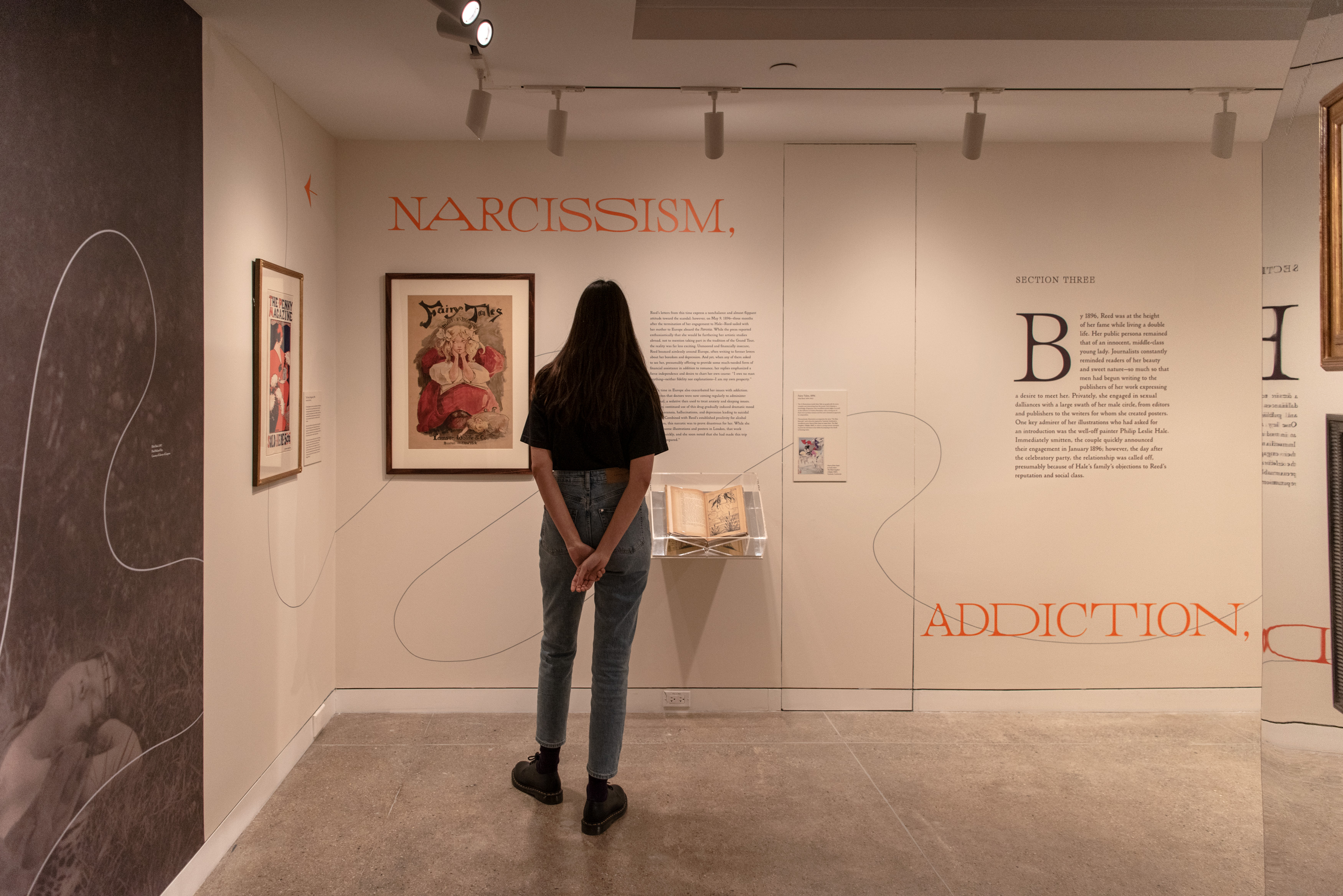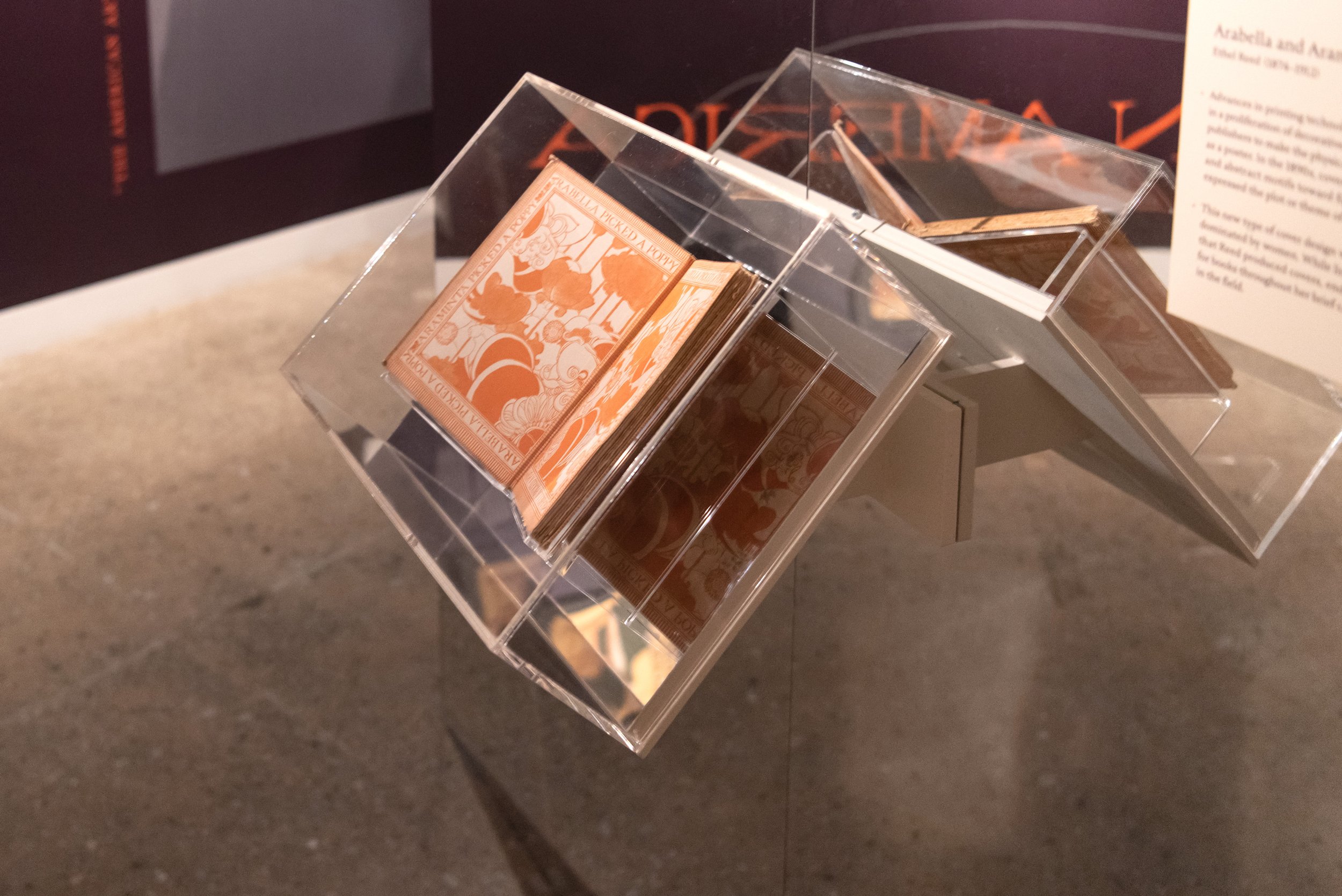Ethel Reed: I Am My Own Property
Visual Identity, Exhibition, Architecture
Exhibition of the late 19th century’s most prominent female poster artist at the only U.S. museum dedicated to posters
Reviving the oeuvre of a forgotten genius
Isometric collaborated with Poster House to design the dream-like exhibition Ethel Reed: I Am My Own Property. The exhibition explores the life and work of the wunderkind poster designer who shot to brief, ecstatic fame in the late 19th century and whose legacy was then largely forgotten. In presenting her posters, the exhibition relates the struggles of the female artist in the male-dominated art world of the late 1800s, touching on issues of class, addiction, mental health, and sexual agency. Cascading, curvilinear mirrors form a privacy screen, representing the claustrophobic interiority of the domestic space, which for Ethel Reed also became a space of limitless imagination and creativity.

Evoking an atmosphere of internal reverie and torment
For this exhibition, Isometric created a custom variable typeface, Ethel, that expands and contracts to capture the distortion and change the artist experienced throughout her brief career. The type design evokes the curvilinear Art Nouveau period, while asserting a contemporary, geometric quality in its counterforms. The typography and hand-painted linework weave throughout, swelling and curving alongside the exhibition design. The architecture echoes this quality with sinuous mirrors reflecting the viewer and the exhibition artworks in an infinite cascade, juxtaposed with life-size, narcissistic images of Ethel Reed herself.
Creating a space to reimagine and reconfigure the canon
Though widely-circulated and popular, Ethel Reed’s work was dismissed by her male contemporaries as superficial and later erased by historians. The exhibition reignites her defiant, feminist narrative while also presenting her struggle to thrive as an independent and sexually free artist in a patriarchal, sexist, and classist society. The mirrored surfaces implicate the audience’s own image in the presentation of the artwork, reminding visitors that they are part of a still-judgmental society that requires constant interrogation and reimagination.




















